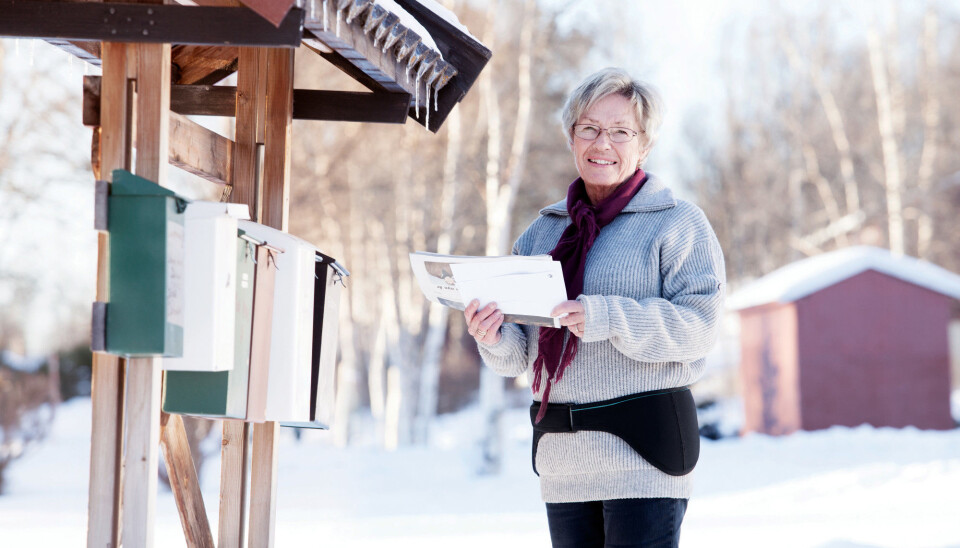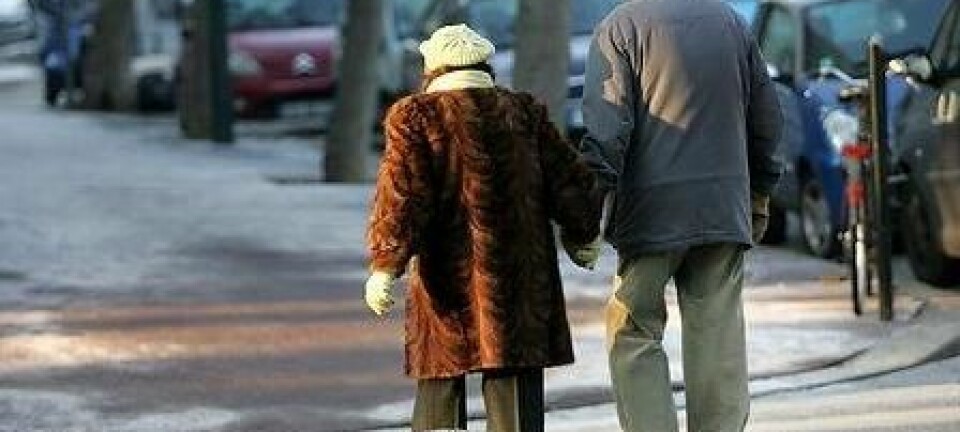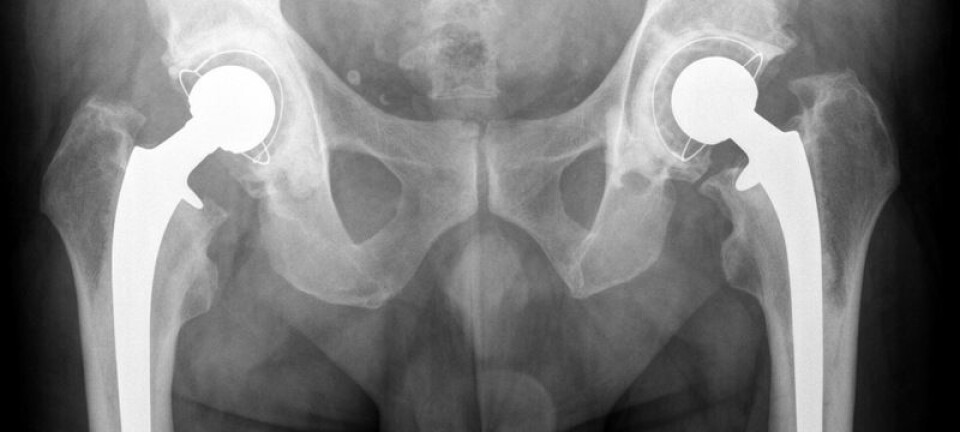An article from Norwegian SciTech News at SINTEF

Hip protector saves you when you slip
Are you well used to wearing studded shoes in winter? If so, you’re probably ready for yet another step towards tackling the eternally icy winter streets.
Denne artikkelen er over ti år gammel og kan inneholde utdatert informasjon.
On average, every day in January 50 people have to report to the emergency rooms after slipping and falling on the icy streets. This greatly increases the risk of hip fractures.
According to Norwegian state broadcaster NRK, almost 10 000 people suffer hip fractures every year. And according to figures from Norwegian Health Informatics, a little more than half of these accidents involve fractures of the upper femur.
Very expensive falls
“The costs of treatment, rehabilitation and nursing home services amount to between 1.5 and 2.5 billion a year”, says Tore Christian Storholmen, a researcher and product designer at Sintef.
He and his colleagues want everyone to know about these figures. Fractures of the upper femur have major consequences both for the sufferer and society as a whole. Together with Protex, a company from Ålen, they are now launching a brand new product – the HiP hip protector.
Sporty hip protector

The protector is soft and flexible, and features a sporty design. However, on impact the material becomes firmer and distributes the pressure over a larger area. This is due to the use of an advanced polyurethane foam which can absorb as much as 90 percent of the impact of a fall.
“The problem of hip fractures is even greater than it might seem at first glance”, says Storholmen. “As many as about 25 percent of elderly people who suffer hip fractures die within a year of their injury. In other words, this recently developed belt which protects its wearers when they fall may make a contribution towards vastly reducing what has become a major health issue for society”, he says.
The protector looks surprisingly stylish – just like a sporty bum-bag. And this is no accident. Elderly people today won’t wear just anything.
“Our aim has been to design a hip protector that people really want to wear”, says Storholmen. “It may save society enormous sums of money. There is also the benefit of increased quality of life, with the best outcome being a longer life for some”, he says.

“We’ve been working very closely with users, physiotherapists and ergotherapists, involving many workshops and a lot of testing. There have been a few ‘reality checks’ along the way when it comes to design and user-friendliness, and Trondheim municipality has assisted us with testing the prototype”, says Storholmen.
Protex drowned with calls
The icy streets have meant a busy period for manufacturers Protex in Ålen, Norway.
“We’ve been almost drowned in calls from people who’ve heard about the protector and want to have one”, says General Manager Margrethe Engan Gjære. “They include doctors, physio- and other therapists working to rehabilitate people who want HiP for sporting activities or for personal use. So we’re fairly sure we’ve manufactured a product that people will want “, she says.
“We’re now working as fast as we can to get a distribution contract so that anyone can ask for the HiP belt in the shops. In the meantime we’ve decided to sell it via our website”, says Gjære.
Design and function top priority
The level of demand doesn’t surprise researcher Tore Christian Storholmen.
“The only thing available previously is this”, he says, showing me a pair of bulky, shapeless pants fitted with two large foam pads in pockets at the sides, designed to protect the hips. This is meant to do the same job as the researchers’ brand new innovation.
“The problem is that no-one wants to wear these because they’re associated with sickness and non-activity”, he says. “A key success criterion has been to give the protector a sporty design and prevent it from looking like a surgical support”, says Storholmen.
Feedback from the “test pilots” is proof that Storholmen and Protex have succeeded. According to Storholmen people say that they feel safer. They feel they can be more active and move around without supports. They are more relaxed and their movements less strained and awkward. The hip protector also satisfies users’ aesthetic tastes. They like the fabric and the way it looks.
It’s thinner than the old pants, and more user-friendly, consisting of an adjustable belt which can be worn outside everyday clothes. The belt is covered with a breathable material that wicks moisture away from the body.
“We want the protector to be used by people in our target group as soon as possible – availability is key”, says Storholmen. “It will be exciting to see if the product takes off when it becomes widely available on the market soon”, he says.
For in spite of their modern lifestyles and youthful outlook, statistics on the elderly speak for themselves. The risk of a fall increases after the age of 65, and every year 30 percent of all over 65’s experience a fall.
































